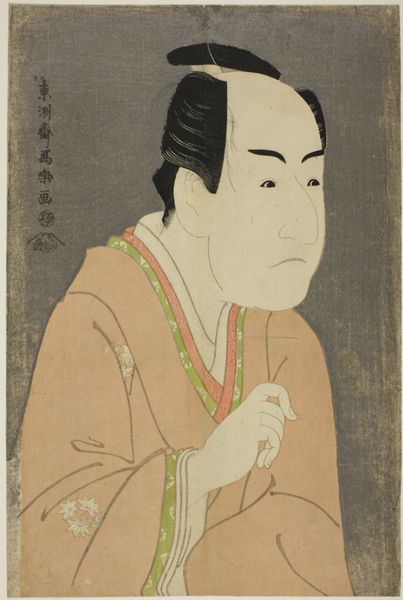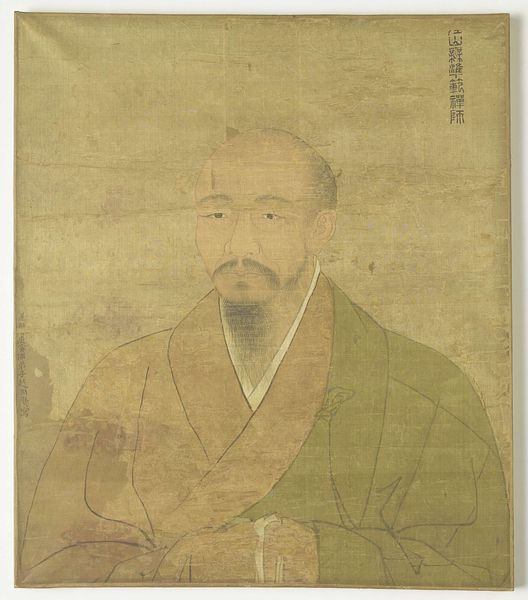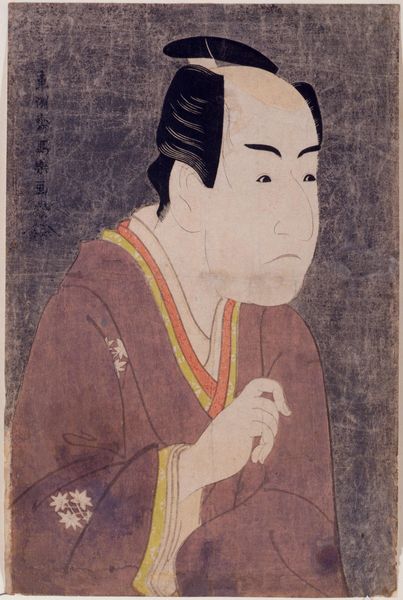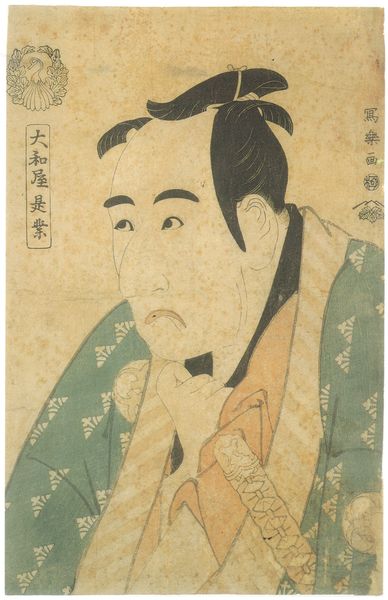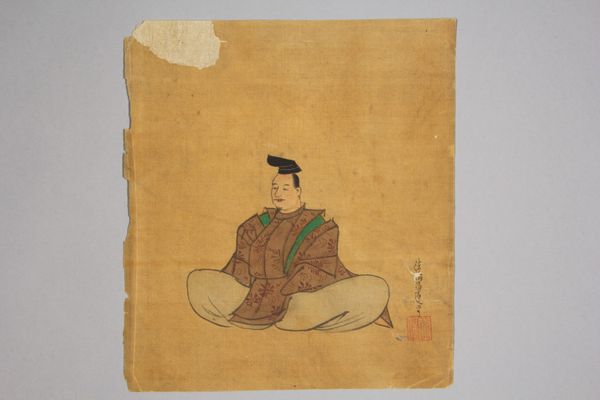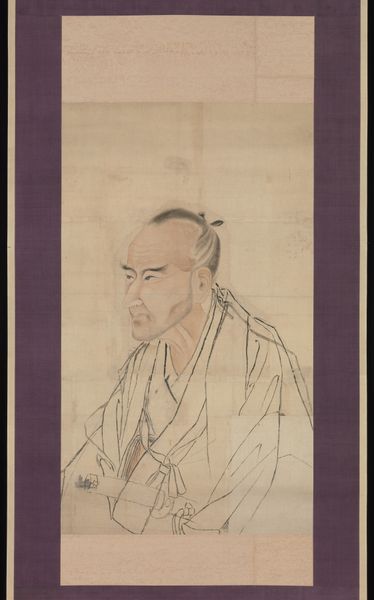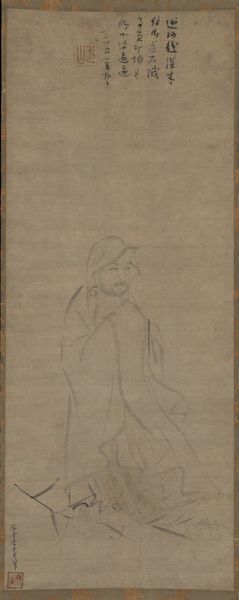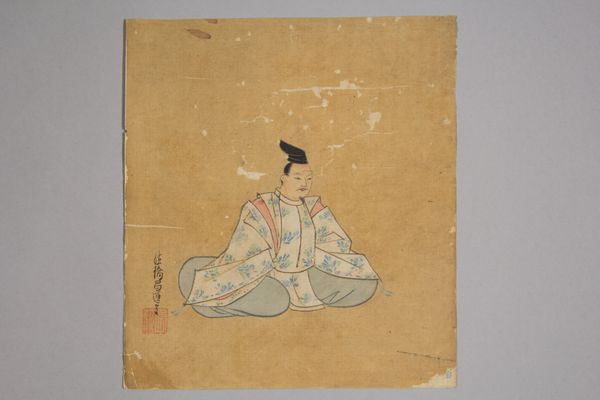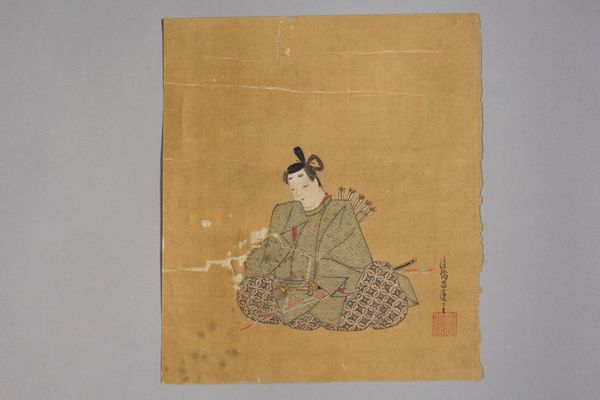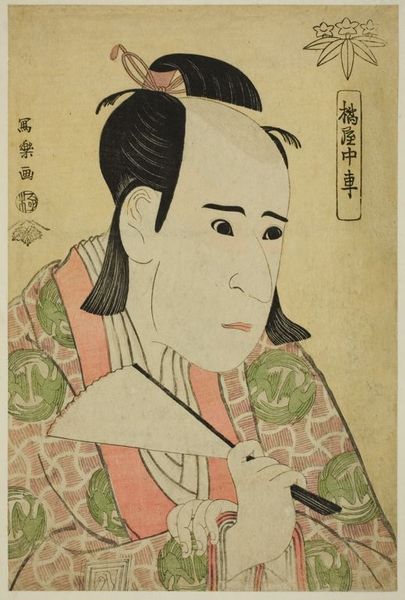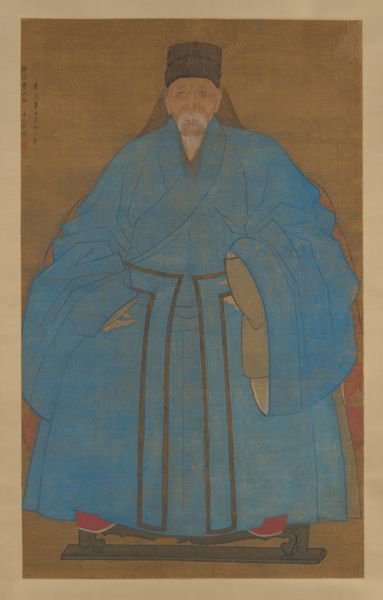
painting, hanging-scroll, ink
#
portrait
#
medieval
#
painting
#
asian-art
#
figuration
#
hanging-scroll
#
ink
#
china
Dimensions: 68 × 21 1/8 in. (172.72 × 53.66 cm) (includes roller ends)37 11/16 × 14 5/8 in. (95.73 × 37.15 cm) (sheet)
Copyright: Public Domain
Editor: Here we have "Sakyamuni," a hanging scroll attributed to Yan Hui, dating back to the 13th century. It’s rendered in ink, and its presentation as a hanging scroll is quite striking. I’m particularly drawn to the rough texture of what appears to be the support, perhaps silk or paper, adding a tactile dimension. What can you tell me about it? Curator: The medium is critical. Consider the artist's relationship to the material—the ink, the paper or silk, and the binding. This piece, created around the 13th century in China, presents us with material questions regarding sourcing, affordability, and its inherent value. Who had access to these resources? Editor: That's an interesting angle! It makes me wonder how common artworks like this were back then, and if the materials influenced the artwork itself. Curator: Absolutely. The ink, for example. Was it locally sourced? Imported? The artist's technique tells us more about material concerns. Look at the bold strokes, and think about the cultural exchange occurring along the Silk Road, influencing the types of pigments and support accessible to artists during this period. How might that economic reality impact what the artist was able to create, or even *chose* to create? Editor: So it's about recognizing artmaking not just as artistic expression, but as a product of material conditions. Is that right? Curator: Precisely! The “spiritual” value of this artwork and its creation, so to speak, rests inextricably with tangible materials, and in turn, the means and modes of accessing it. We must think about the historical circulation of labor, material, and the global movement of artistry when approaching artwork today. Editor: I've definitely learned a new lens to appreciate this piece. Thanks so much! Curator: My pleasure! Examining material processes really reveals unseen factors in the production and appreciation of any work of art.
Comments
minneapolisinstituteofart over 1 year ago
⋮
A professional painter, Yan Hui was especially known for his figure paintings of religious subjects. Here he depicted Sakyamuni (left), an Indian prince from the 400s BCE, whose teaching forms the underpinnings of Buddhism; and Bodhidharma (right), an Indian sage from the 500s CE, who advocated practicing meditation as a means of achieving spiritual enlightenment. Sakyamuni’s quiet, introspective character is suggested by his downcast eyes and gently inclined head, whereas Bodhidharma’s aggressive nature is conveyed by his direct gaze. Yan’s choice of red for the robes of both holy men provides a visual connection between the two paintings.
Join the conversation
Join millions of artists and users on Artera today and experience the ultimate creative platform.

